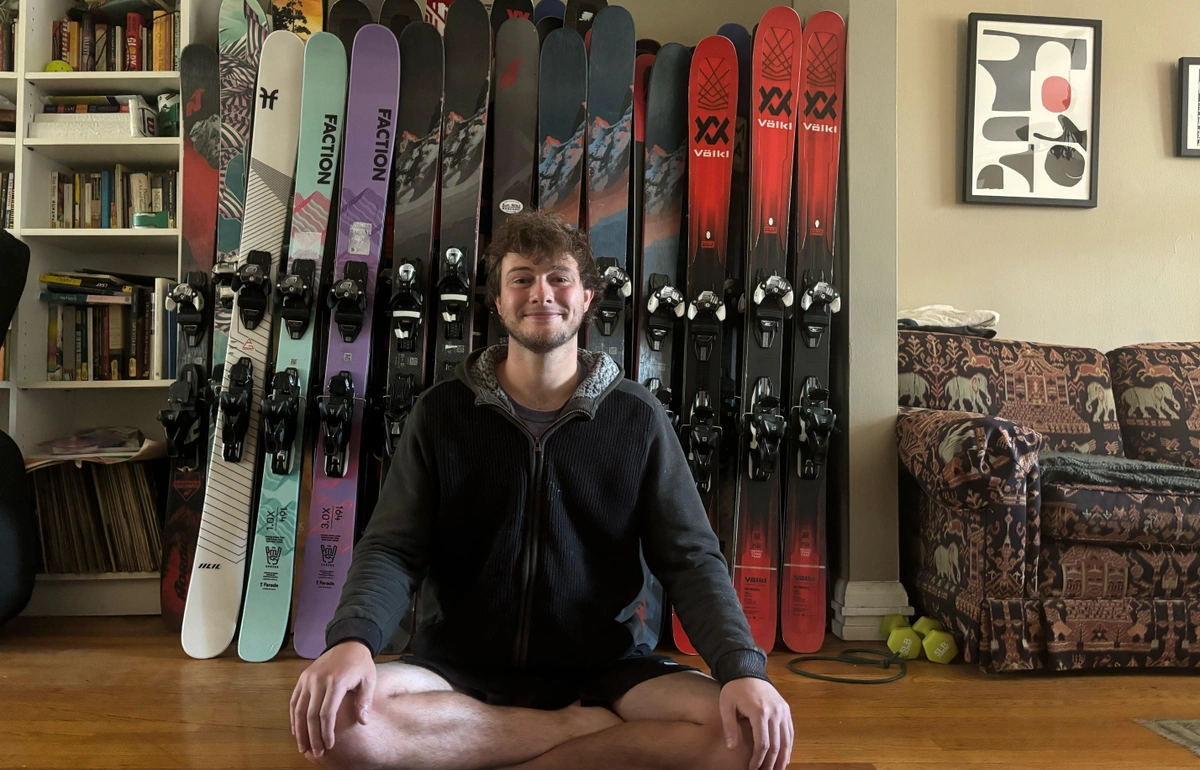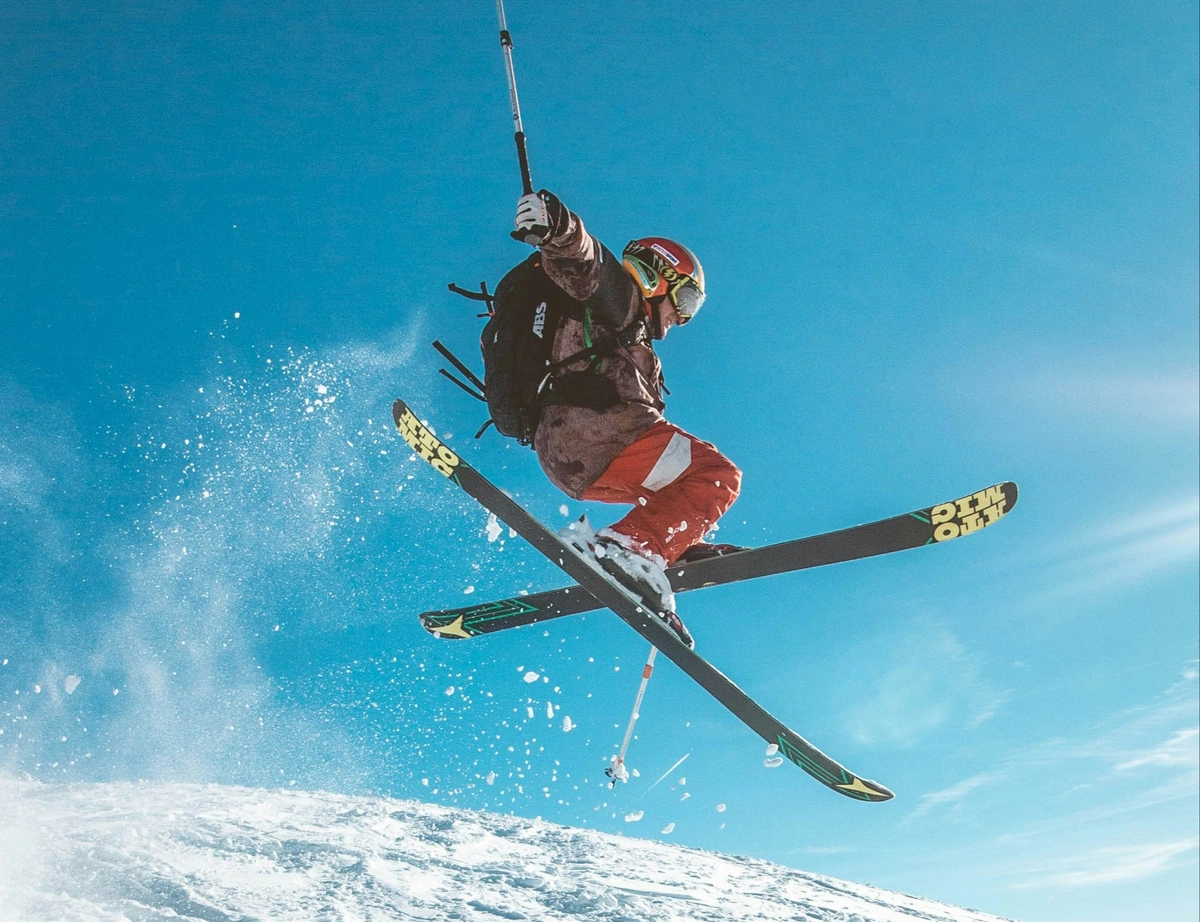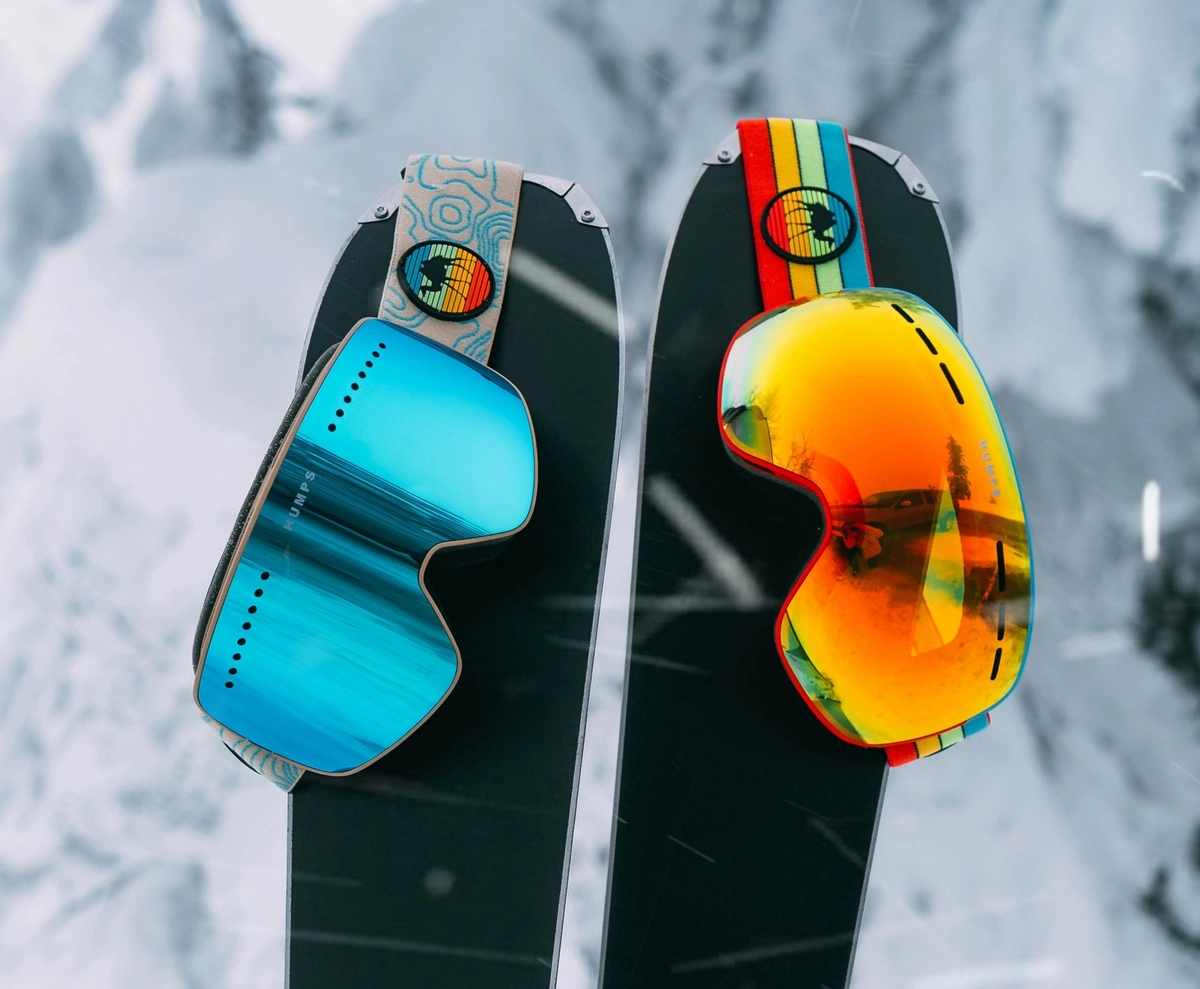Ski Equipment - Page 352

This month, we check in with SkiAmbassador, aka Ben Goodman. Since 2022, Ben has sold 450 pairs of skis out of his 1000-sq-ft Denver apartment.

In addition to the extra cash in your pocket (which can go towards offsetting new gear costs or buying a couple extra lift tickets at a pricy resort like Vail or Aspen), selling your used skis brings a couple of other benefits.

Let’s dive into the 4 benefits of buying used ski equipment and why it might be the best move you make this season.
When shopping for ski apparel, focus on warmth, comfort, and weather resistance. Base layers should be moisture-wicking and breathable to keep you dry, whether skiing in affordable ski apparel or premium brands. For outerwear, ski jackets for men and second-hand ski jackets offer excellent insulation and waterproofing, with options ranging from lightweight shells to insulated coats.
Pants and bibs provide essential protection against the elements. Look for options like men's white ski bibs for full coverage or Helly Hanson baggy snow pants for a looser, more comfortable fit. For budget-conscious shoppers, second-hand ski pants can deliver quality without the high price tag.
Accessories like gloves and mittens are crucial for maintaining warmth and grip. Opt for insulated, waterproof styles to keep hands dry on the slopes. Hats or beanies are equally important to retain body heat in freezing conditions.
For more intense activities, consider specialized gear like a ski race suit, designed for aerodynamic performance and protection. Skin suit ski options are also ideal for racers seeking a snug, wind-resistant fit. Whether buying new or browsing thrift ski clothes, prioritize durable, weatherproof fabrics to stay comfortable in all conditions.
When shopping for ski goggles, prioritize fit, lens quality, and protection to enhance visibility and comfort on the slopes. Large snow goggles are ideal for maximizing peripheral vision, allowing you to spot obstacles and other skiers more easily. Look for goggles with adjustable straps and anti-fog coatings to maintain clarity in varying conditions.
Lens type is also crucial. Polarized lenses reduce glare on sunny days, while photochromic lenses adjust to changing light conditions. For those seeking good value ski goggles, consider options with interchangeable lenses, which provide flexibility for weather conditions without breaking the bank.
Top brands like Oakley, Smith, Zipline, and Scott offer a range of ski goggles, from budget-friendly models to high-performance options with advanced lens technology.
Different ski bindings are designed for specific disciplines. Downhill ski bindings are built to provide maximum stability and control, with adjustable DIN settings that allow you to customize the release based on your weight, skill level, and skiing conditions. For those seeking to save money, cheap ski bindings can still offer solid performance, but ensure they meet safety standards.
Telemark bindings allow for a free-heel motion for more advanced or off-piste skiing, giving skiers the flexibility to handle backcountry terrain and steep descents. When buying second-hand ski bindings, inspect for wear and tear, especially in the release mechanisms and mounting plates. A professional tune-up is always helpful.
Top brands like Marker, Salomon, Look, and Tyrolia offer reliable bindings for both downhill and telemark skiing, with options ranging from budget-friendly models to high-performance, advanced bindings.
When shopping for skis, consider the type of terrain and skiing style to ensure you choose the right pair. All-mountain skis are versatile and designed to handle a variety of conditions, making them ideal for beginners or those looking for cheap or second-hand women’s skis to save money.
For park and freestyle enthusiasts, twin-tip skis provide optimal maneuverability for tricks and jumps. Black Crows and used ON3P skis offer some of the best twin tip powder skis for advanced riders. For kids, 100 cm kids skis and kids twin tip skis are great for learning tricks and riding in the park. Mens twin tip skis also provide a fun, playful feel for adult freestylers.
If you're heading off-piste, alpine touring skis are lighter and feature bindings that allow for uphill travel and downhill stability. Powder skis are typically wider and more buoyant, perfect for deep snow days.
For speed-focused skiers, race skis are stiff and narrow, providing excellent edge control at high speeds. Check out race ski clearance sales to find deals on premium models. Boys skis and race skis are often available in discounted sizes, making it easier to find gear for younger racers.
Whether you're a beginner or a seasoned pro, top brands like Rossignol, Fischer, HEAD, and Atomic offer a range of skis tailored to every terrain and style.
Ski boot fit and comfort are key to maximizing performance and preventing injury. Downhill ski boots should provide a snug, supportive fit that allows for precise control while maintaining warmth and cushioning. For those looking for cheap ski boots, consider last season’s models or second-hand options, but ensure they haven’t been excessively worn or packed out.
For young skiers, kid ski boots, boys ski boots, and toddler ski boots should be easy to adjust and feature soft, comfortable liners to keep little feet warm. Adjustable boots with multiple buckles or Velcro straps are ideal for growing kids, offering a secure fit as they gain confidence on the slopes.
If you're planning to venture off-piste, telemark ski boots provide a flexible, free-heel design, allowing for better mobility during uphill climbs while still offering downhill stability. Look for boots with a robust sole and solid ankle support for rugged terrain.
For those shopping for youth ski boots, prioritize models with adjustable fit systems to accommodate growth spurts without sacrificing performance. Top brands like Salomon, HEAD, Lange, and Nordica offer a range of boots designed for beginners to advanced skiers, making it easy to find a pair tailored to your skiing style and budget.
When shopping for ski poles, consider factors like length, material, and grip. The correct length is essential – when holding the pole upside down, your arm should form a 90-degree angle. Aluminum poles are durable and budget-friendly, making them a great choice for those seeking cheap ski poles, while carbon fiber poles are lighter and more responsive.
Grip design also matters; ergonomic grips provide comfort and control, while adjustable straps keep the poles secure during turns. For backcountry or alpine touring, look for adjustable ski poles with telescoping shafts to adapt to varying terrain. Brands like National Team offer high-quality options, from affordable beginner poles to advanced, lightweight models.
Cross country ski gear comprises three main components: skis, boots, and bindings. Cross country skis vary by terrain – classic skis are best for groomed trails, while wider, sturdier backcountry skis on sale provide stability and float in deep snow.
Cross-country ski boots should provide both comfort and support. Classic boots offer a softer, flexible feel, while skate boots feature stiffer cuffs for increased ankle stability. For rugged terrain, look for boots designed specifically for backcountry use with reinforced soles and water-resistant materials.
Bindings are essential for transferring power from your boots to your skis. NNN, SNS, and BC bindings each offer different levels of support and compatibility. If you’re seeking a complete setup, consider a backcountry ski setup for sale, often including skis, boots, and bindings tailored to off-trail conditions.